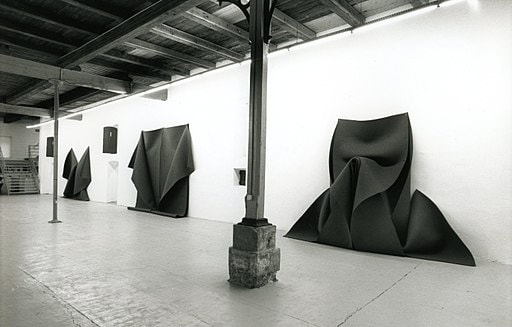Beyond the Aesthetic of Minimalism Post-Minimalism can be a hard concept to pin down. That’s largely because the term refers not so much to a single, unified aesthetic as to a range of interrelated styles that arose during the late 1960s in the aftermath of Minimalism. Although the different strands of Post-Minimalism overlap with each other, they frequently have diverging, even contrary, approaches and perspectives. Within this broad church, for example, we find not only conceptual painting, sculpting, and photography but also performance art, process art, body art, and site-specific art.
What is the “Post” in Post-Minimalism? When we try to sum up the elusive essence of Post-Minimalism, we also need to remember that the artists grouped under this term have different attitudes and responses to Minimalism itself. For some, the “Post” in “Post-Minimalism” perpetuates and develops the Minimalists’ desire to create works that are abstract, impersonal and have a striking material presence. For other Post-Minimalists, though, the point is to reject the earlier movement’s formality and impersonal qualities. Some Post-Minimalists have, like the Minimalists before them, played down the intentions of the artists and instead highlighted the sheer materiality of their work. Unlike the Minimalists, though, they have de-emphasized form and composition, opting instead for approaches that allow the material to shape itself by sagging or drooping, for example. This part of the Post-Minimalist aesthetic is called “anti-form”. Post-Minimalism has also changed things by moving away from the gallery and out into natural or less formal environments. Unity in Diversity When we think of some key Post-Minimalist artists and works, the movement’s quality of unity in diversity becomes even more evident. The rubric of Post-Minimalism is elastic enough, for instance, to encompass such different phenomena as Robert Morris’s process art, which prioritizes the act of creation itself over its final product; Vito Acconci’s photographic body art; and Richard Long’s walking-based process art, which leaves trails on the ground. Like Long’s art, Post-Minimalism as a whole leaves fascinating trails as it shapes our environment.
0 Comments
Leave a Reply. |


 RSS Feed
RSS Feed
